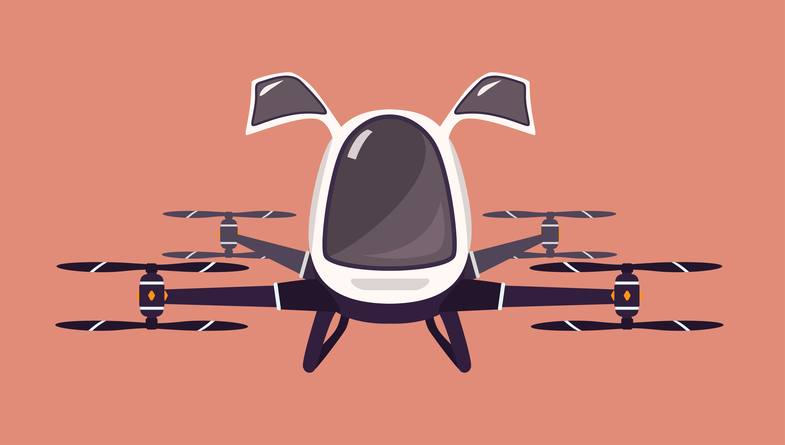Congestion of roadways is a problem that continues to plague metropolitan areas around the world. Whether cars, pedestrians, public transport or carpools, roads are handling more commuters than they have the physical space to accommodate. That’s led some companies to look to the skies.
EHang, Inc., a Chinese drone-making company, revealed that they’ve been running flight tests of the EHang 184, their version of an autonomous drone that can hold a human passenger. Designed to resemble a quad-copter, the drone taxi features eight propellers and is powered entirely by batteries. While only a single-person drone has been tested, there are plans for a two-person drone powered by 16 propellers once the technology is perfected. Over 1,000 test flights have been completed in China and Dubai under a variety of conditions, such as speed, height, visibility and weather. Currently, the taxi can handle flight times under an hour. Ehang plans to continue pushing development until its drone taxi can carry passengers up to 10 miles away at approximate speeds of 80mph.
While test flights are just a first step, the progression is a promising milestone for alleviating traffic congestion in major cities. Ehang is hardly alone in the autonomous aerial vehicle (AAV) market, though. Just recently, California-based Vahana (backed by Airbus) announced they, too, have finished tests on a drone taxi. Volocopter (backed by Intel) is also a major player in the AAV space. Both competitors currently boast longer range and plans for more spacious design.
Much like with autonomous road vehicles, skeptics worry about the safety of self-driving drones. Not only is the safety of passengers of primary cause for concern, but the increased risk of environmental factors (heavy wind, rain, heat) has some questioning the viability of the service. EHang plans to quell this concern by having human pilots on hand to remotely take over the vehicles should an emergency occur or heavy weather warrant it. Also among the technology’s detractors are those that worry AAVs could eventually clutter the skies with as many vehicles as those currently congesting our roadways.
Drone taxi services are still quite a ways away from becoming a real service for commuters, and the likelier option in the short-term is drone delivery from companies such as Amazon. Still, the research and development shows companies are exploring every option when it comes to alleviating traffic gridlock and reducing dependence on fossil fuels in the process. What do you think of the prospect of drone taxis? Would you ride in one? Share your thoughts in the comments below.
